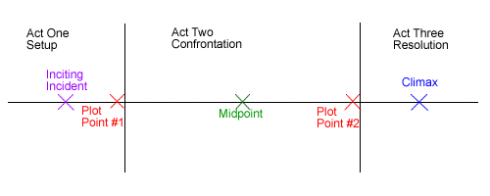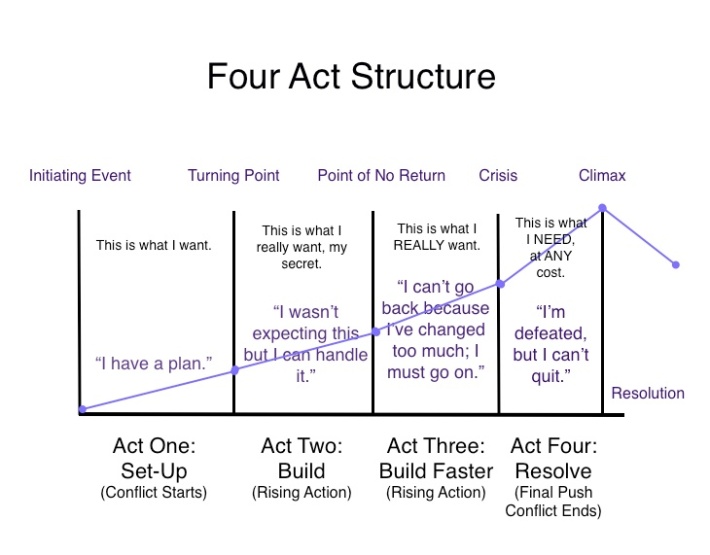When writing a screenplay it is often cited that dramatic structure should follow a 3 Act structure, which Aristotle described succinctly as:
ολον δε εστιν το εχον αρχην και μεσον και τελευτην
“A whole is what has a beginning and middle and end”
This is definitely sound advice, however many scripts do fail from being able to move through all three Acts completely, notably simply just ‘finishing’ and not ending properly, with a resolution through climax or denouement.
Moreover, the main body of the script, the middle and where the majority of continuous action lies, is the hardest part of the script to write as it must contain obstacles, climaxes and conflicts, leading to turning points in the protagonist’s life, points from which he can’t return.
Thus the Three Act structure, (pictured below), is definitely sound advice and provides a great structure for writers to follow.
However, for an aspiring writer, and even for some experienced writers, I believe the 4 Act structure is an even easier model to follow. This again only really contains 3 Acts, but splits the second Act into an Act IIA and Act IIB (or, as in the diagram below, Acts 2 and 3). What is the purpose of this? Well, for my own use and personal perspective, this reminds the writer to clearly see that he or she needs to have a substantial Act 2, encouraging them to increase the conflict of quantity of turning points. So really, a 4 Act structure is identical in its theory to a 3 Act structure, but helps writers visualise a little better what they are trying to achieve.



